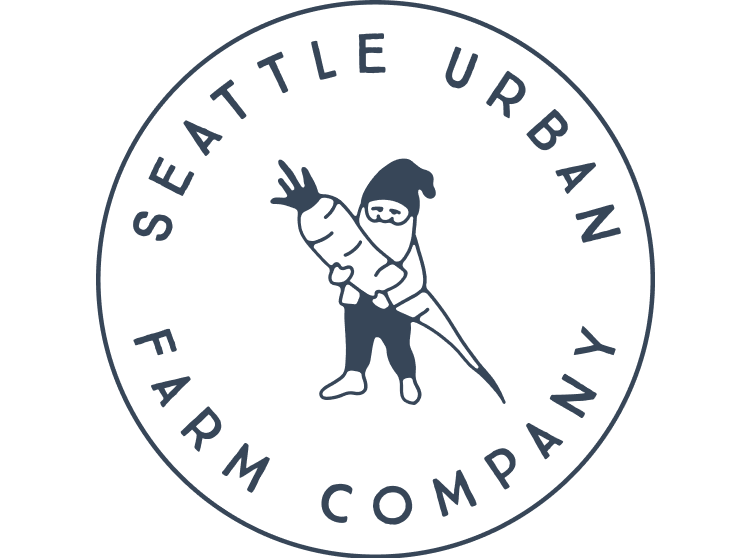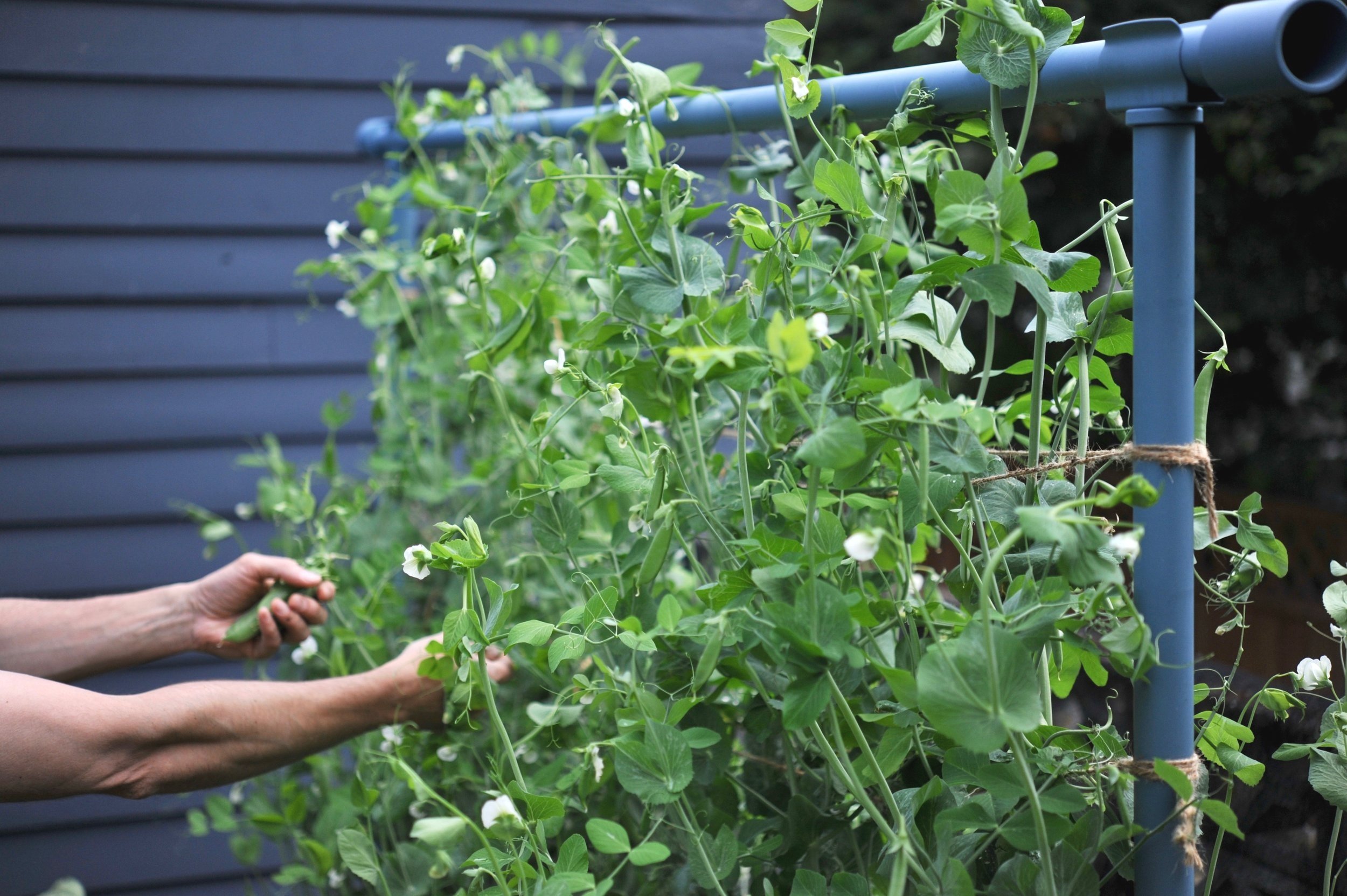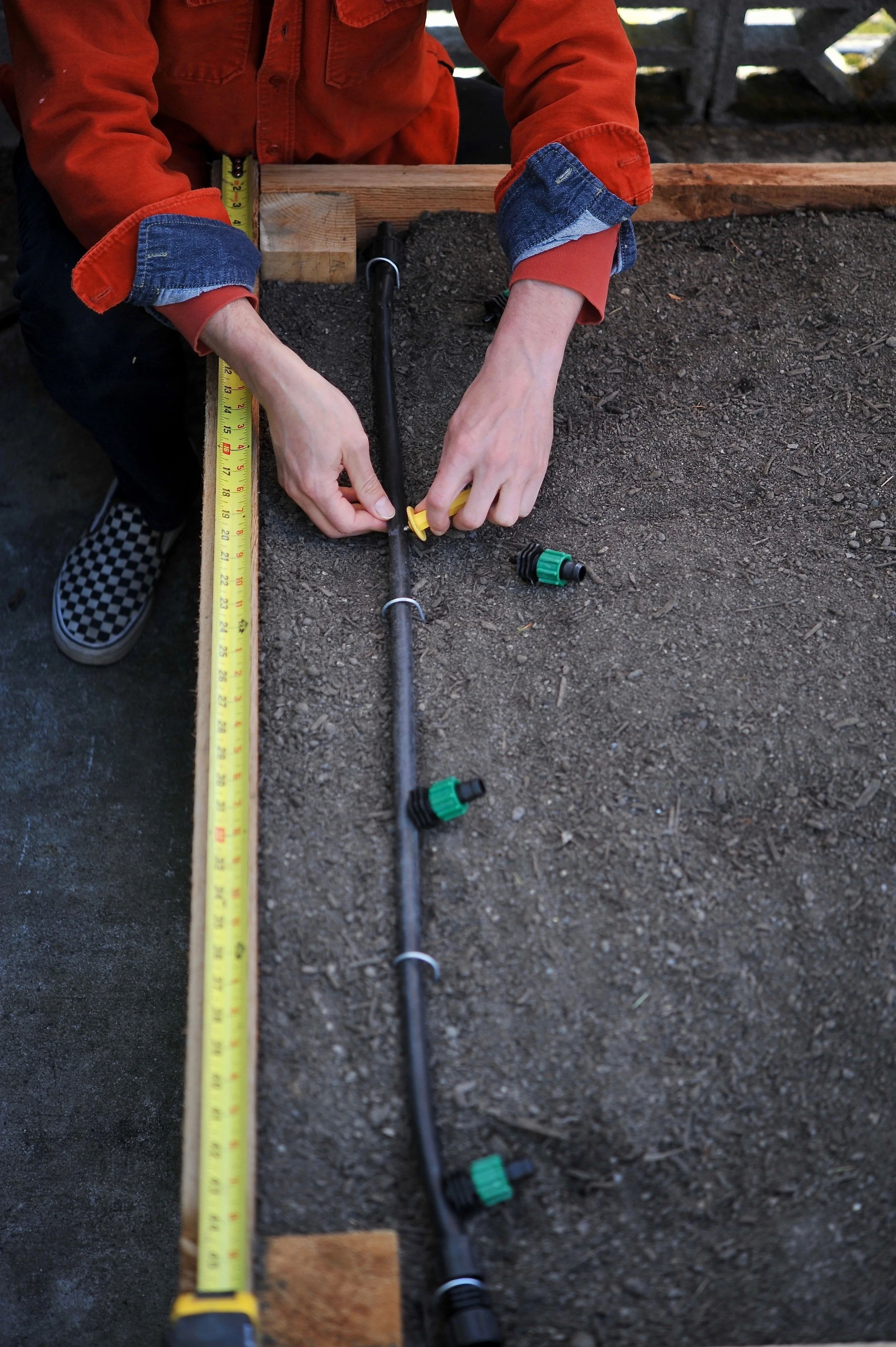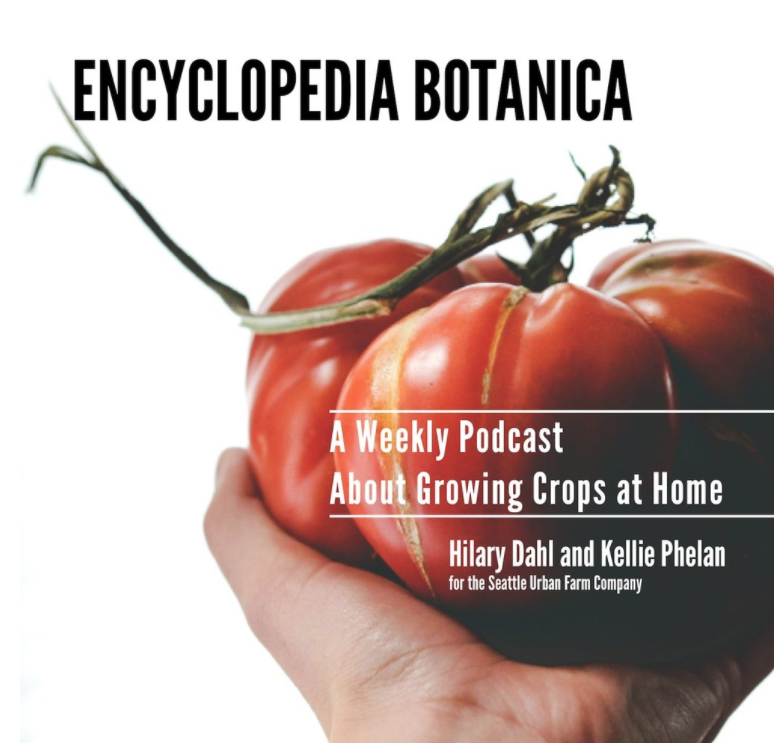This week we’ll be talking about fall salad greens. Even though it’s mid-August and we are in the midst of record high temperatures here in Seattle, it’s a perfect time to be thinking about fall and winter harvests.
Derived from wild greens in the Mediterranean, lettuces and many other salad greens are well known for their reluctance to grow in hot conditions. One of my favorite ways to take advantage of the cooler temperatures of fall is to grow a variety of baby leaf crops and salad mixes. There are a lot of salad greens to choose from and I typically grow an assortment, including head lettuces, arugula, baby lettuce mix, mesclun mix, mizuna and spinach.
Fall salads can be particularly refreshing because in many climates, hot summer weather makes it extremely challenging to grow quality greens for a few months right in the middle of the gardening season. Some types of greens seem to perform even better in fall than they do in spring. For example, in our climate, fall is by far the best season for spinach and bok choi.
Like most of your other fall crops, it is essential to get these plants and seeds in the ground well before light levels and temperatures begin to drop. In most instances, you should determine your average first frost date and then work backwards using the crops “days to maturity” to decide when to put in your final fall plantings of salad greens. Remember that crops can grow a little more slowly as temperatures begin to cool, so it’s often advisable to be somewhat conservative when estimating how fast things will grow (meaning, allow them even more time that it says on the seed packet).
In the northern part of the US, our daylength changes dramatically from season to season. In the middle of summer, the days are extremely long, but in winter, there is not enough sunlight for most plants to continue to photosynthesize effectively. In northern regions, there is a portion of the year that some growers refer to as the “persephone period”. The persephone period starts when the total number of daylight hours dips below ten hours, resulting in a dramatic slowing of plant growth.
The “Persephone Period,” is named after the daughter of Demeter, the greek goddess of the harvest. Demeter was not very happy that Hades, the god of the underworld, was able to take Persephone away half of the year. The expression of her anguish became cold and dark days, otherwise known as winter, when plant growth cannot take place. Spring represents the yearly emergence of Persephone from the underworld. At least that is the short version of the tale, if you’re interested in mythology, it’s definitely a story worth investigating. Here in Seattle, our persephone period starts right at November 1 and lasts all the way until March 1. During this time, we don’t plant any new crops unless they are grown indoors with supplemental light. I’d encourage you to look up your daylight hours and put the beginning and end of your persephone period on your calendar.
Salad greens can be broken into two categories, cold hardy and moderately cold-hardy. Cold hardy crops can typically withstand regularly freezing temperatures and moderately cold-hardy crops can withstand occasional light frosts.
Crop planning for your salad greens should be informed by each species tolerance to freezing temperatures. Its advisable to plant more space in the garden with crops that can withstand lower temperatures and more regular frosts, because those crops will provide a much longer harvest period and a more robust overall harvest.
As an example, let’s compare lettuce mix with spinach. Baby lettuce mix is much less cold hardy than spinach. Therefore you may want to dedicate more space to spinach in your fall garden.
Since lettuce mix is only moderately cold hardy, if it is seeded only 4-6 weeks before your expected first frost, you might not have a very long harvest window for the planting. Since it is sensitive to freezing temperatures, it will start to deteriorate immediately after your first frost, thus forcing you to harvest all of the greens you can in a very short period of time. In contrast, spinach can tolerate very cold temperatures and even long periods below freezing. Therefore, a planting of spinach has the opportunity to provide greens starting in early fall, but lasting all the way through the end of winter. Other examples of very cold hardy crops are mustard greens, cabbage and kale.
The harvest period of all winter crops can be extended by planting in a greenhouse, using floating row covers, and planting under cold-frames. These season extension methods help keep crops warmer and help protect them from drying and damaging winter wind.
Season extension is a whole world in and of itself, so I won’t go too deep into this topic for now, except to say that, if you’re new to this concept, and would like a place to start, look into installing some simple floating row covers on a few beds this fall and see how it goes. Floating row cover is a white, spun polyester fabric that is breathable, so allows airflow and moisture to move across the barrier, but also adds a significant layer of protection. It can be purchased online and in many local garden stores. If you have a hard time locating it, growers sometimes refer to it by the brand name Reemay, spelled r-e-e-m-a-y.
Most winter crops are harvested just like they would be during the primary growing season. Crops like cabbage, head lettuce and bok choi are cut only once. Mature broccoli and kale can provide ongoing pickings, and in our climate can last through the winter and into March. Many other winter greens are grown as “cut and come again crops”. Cut and come again is a term that simply indicates that the plant can be harvested and then allowed to regrow to maturity for another cutting. Some of these crops can provide 3, 4 or even 5 cuttings through the winter season. While summer cut and come again crops will resprout very quickly, the winter version will happen much more slowly.
I particularly like cut and come again crops because they can be seeded in large swaths and do not need to be thinned down, allowing you to maximize your space during the time of year when plants grow very slowly.
Unpredictable winter weather conditions make it impossible to ensure that all fall and winter crops survive to maturity, so planting a range of different species will provide you with the best chance of success. If you find that some of your fall and winter crops don’t perform well on your first attempt, don’t be discouraged, growing during the off season like this can be challenging. Take note of the crops that do best and adjust your plantings next season.







